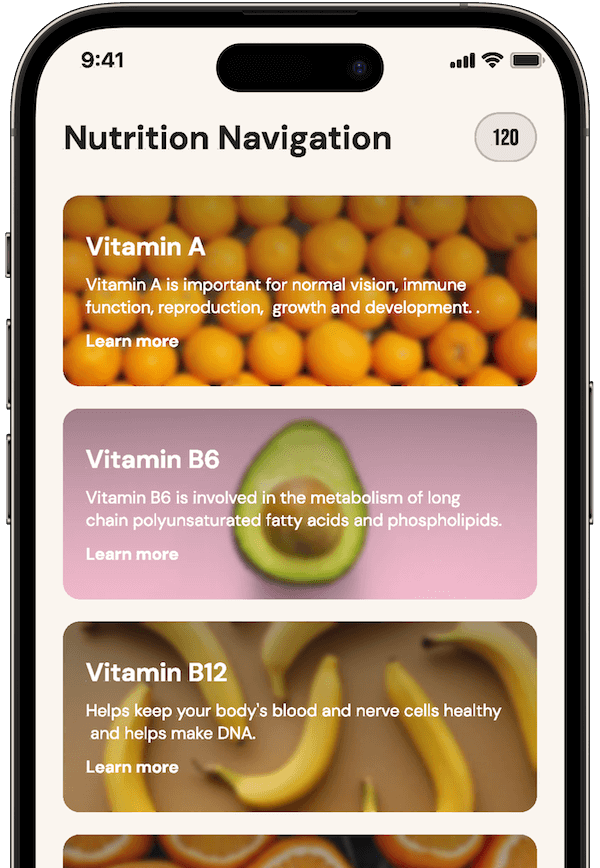Living with adenomyosis has been a significant part of my journey, starting from my teens. The symptoms were relentless, with a persistent, uncomfortable swelling known as “adenomyosis belly” that made me rethink everything from diet to daily activities.
As I ventured into managing my symptoms and later coaching others through similar struggles, I realised the importance of a tailored approach to health. This insight eventually led to the creation of the Unprocessed App, designed to help others manage their conditions through diet and lifestyle changes.
Adenomyosis belly is primarily caused by the inflammation and enlargement of the uterus due to endometrial tissue growing into the muscular wall. This condition often results in significant bloating and abdominal distension, which may fluctuate based on hormonal changes and can be managed, though not cured, through dietary and lifestyle adjustments. Effective management can reduce the prominence of adenomyosis belly, particularly with the right nutritional support, which our Unprocessed App can help monitor and manage.
What Is Adenomyosis?
Adenomyosis is a gynaecological condition characterised by the growth of endometrial tissue, which normally lines the uterus, into the muscular wall of the uterus (the myometrium). This abnormal presence of endometrial cells causes the uterine wall to thicken and often leads to a heavier, enlarged uterus.
Unlike endometriosis, where similar tissue grows outside the uterus, adenomyosis remains within the uterine muscle. The infiltration of this tissue into the uterine muscle can cause painful, heavy periods, and chronic pelvic pain, as the tissue responds to hormonal changes each month.
This internal activity often leads to significant discomfort during menstruation and can affect general reproductive health.
What Is Adenomyosis Belly?
Adenomyosis belly is a distinctive symptom of adenomyosis, characterised by pronounced swelling or bloating in the abdominal area. The primary cause of adenomyosis belly is the invasive growth of endometrial cells deep into the muscular layer of the uterus, as explored in this study.
It’s like these cells forget where they actually belong and decide to wander off causing chaos, which contributes to the noticeable swelling often associated with the condition. Unlike typical weight gain or general abdominal bloating that might fluctuate day-to-day, adenomyosis belly can present a consistent and sometimes severe bloating that closely tracks with menstrual cycles.
Many women with adenomyosis initially mistake this persistent bloating for weight gain or a typical dietary issue, which can lead to confusion and concern. It’s important to understand that this type of belly swelling is reflecting underlying changes in the uterus rather than changes in body fat or general health.
What Does Adenomyosis Belly Look Like?
Adenomyosis belly typically presents as a persistent and noticeable swelling in the lower abdomen, often mistaken for regular weight gain or typical bloating. This specific bloating tends to be more constant rather than fluctuating like digestive bloating. It can give the abdomen a distended appearance, making the stomach area feel hard and tight. It looks like this:

What Causes Adenomyosis Belly?
The primary cause of adenomyosis belly is the invasive growth of endometrial cells deep into the muscular layer of the uterus. This aberrant tissue behaves like the normal endometrium—thickening, breaking down, and bleeding during each menstrual cycle—but its location within the uterine muscle causes increased inflammation and enlargement of the uterus. This chronic inflammatory response is a key driver of the bloating and swelling characteristic of adenomyosis belly.
Additionally, the enlarged uterus presses against other abdominal organs, contributing further to the sensation of bloating. Certain factors may exacerbate this condition, including hormonal imbalances, particularly an excess of oestrogen, which is known to stimulate the growth of endometrial cells.
Although not all triggers are well-understood, activities or conditions that increase oestrogen levels, such as prolonged exposure to oestrogen without progesterone, obesity, and high-fat diets, can potentially worsen the symptoms of adenomyosis. This hormonal component, combined with the physical expansion of the uterus and the associated inflammatory response, contributes to the distinctive and often painful bloating known as adenomyosis belly.
Does Adenomyosis Belly Go Away on Its Own?
Adenomyosis belly does not typically resolve on its own without intervention, much like that annoying guest at a party who doesn’t take the hint to leave. However, the symptoms associated with adenomyosis belly can indeed fluctuate, offering a ‘now you see me, now you don’t’ sort of scenario throughout the menstrual cycle.
During menstruation, symptoms may intensify as the endometrial tissue responds to hormonal changes, leading to increased inflammation and swelling. Post-menstruation, these symptoms may subside slightly as hormone levels adjust, causing a temporary decrease in bloating.
A significant permanent change in adenomyosis symptoms generally occurs during menopause. As the body’s production of oestrogen decreases significantly during menopause, the stimulation of endometrial tissue growth lessens, which can lead to a reduction in the overall symptoms of adenomyosis, including belly bloating.
This hormonal shift can cause the adenomyosis lesions to shrink, reducing the inflammation and enlargement of the uterus, and thereby diminishing the presence of adenomyosis belly. Thus, while adenomyosis itself may not completely disappear, the specific symptom of adenomyosis belly can reduce substantially post-menopause.
Managing Adenomyosis Belly Through Diet and Lifestyle Changes
Managing your diet is an essential strategy for dealing with adenomyosis belly, as certain foods can exacerbate symptoms while others may help reduce them. A diet rich in anti-inflammatory foods such as leafy greens, fatty fish like salmon, berries, nuts, and seeds can significantly mitigate inflammation associated with adenomyosis. On the other hand, foods high in refined sugars, saturated fats, and processed ingredients can trigger more severe symptoms and flare-ups due to their inflammatory properties.
Immediate dietary adjustments, like reducing the intake of gluten or dairy products, which are known irritants for some individuals, can also have a quick impact in alleviating symptoms. It’s important to identify and avoid specific foods that trigger your symptoms, as individual reactions can vary greatly.
The Unprocessed App can be a powerful tool in managing adenomyosis belly through diet. The app helps users track their intake of a wide range of nutrients, ensuring a well-rounded and personalised diet that covers all necessary micronutrients, vitamins, and minerals to support optimal health. This comprehensive tracking is crucial because maintaining the right balance of nutrients can help strengthen the body’s natural defences against inflammation and hormonal imbalances that drive adenomyosis symptoms.

Additionally, the Unprocessed App offers expert feedback on your dietary choices, providing tailored advice that can help you adjust your eating habits more effectively. By monitoring your gut health through the app, you can gain valuable insights into how your diet impacts your overall well-being and make informed decisions to improve your symptoms. Join our waitlist here.
The link between gut health and systemic inflammation is well-established; a healthy gut can significantly reduce inflammation throughout the body, thereby alleviating conditions like adenomyosis that are exacerbated by inflammatory processes. This holistic approach to diet management, supported by technology and expert guidance, empowers you to take control of your health and mitigate the impacts of adenomyosis on your daily life.
Recommended Foods to Combat Adenomyosis Belly
To manage inflammation associated with adenomyosis effectively, incorporating specific foods and supplements into your diet can be beneficial. These foods not only help reduce inflammation but also support overall digestive health, which is crucial for those suffering from adenomyosis. Here’s a recommended list of foods to include in your diet:
Omega-3 Rich Foods: These are excellent for reducing inflammation.
- Salmon
- Flaxseeds
- Chia seeds
- Walnuts
High Fiber Foods: Essential for improving digestive health and regularity.
- Beans and legumes
- Whole grains like oatmeal and quinoa
- Berries
- Broccoli and Brussels sprouts
Antioxidant-Rich Fruits and Vegetables: Help combat oxidative stress and inflammation.
- Leafy greens such as spinach and kale
- Brightly coloured vegetables like bell peppers and carrots
- Blueberries
- Apples
Including these foods in your diet can help mitigate the symptoms of adenomyosis belly by reducing inflammation and supporting gut health.
Lifestyle Modifications to Reduce Adenomyosis Belly
Regular, gentle exercise such as yoga or walking can greatly benefit those suffering from adenomyosis belly by improving overall body function and reducing stress levels, which may exacerbate symptoms. Stress management techniques like meditation can also be beneficial.
FAQs
Can Adenomyosis Belly Affect Pregnancy?
Adenomyosis can impact fertility and pregnancy, causing complications due to the uterus’s altered condition. However, many women with adenomyosis do successfully conceive and carry pregnancies with medical support.
Are There Non Dietary Treatments That Can Help Reduce Adenomyosis Belly?
Yes, treatments such as hormonal therapy and surgical options may be considered to manage symptoms.
How Does Adenomyosis Belly Differ From Bloating Caused By Other Conditions?
Adenomyosis belly is specifically linked to uterine inflammation and does not fluctuate as much as typical digestive bloating.
Can Exercise Worsen Adenomyosis Symptoms Or Adenomyosis Belly?
While vigorous exercise might increase discomfort, gentle routines typically offer relief and improve symptoms.
Is There A Connection Between Adenomyosis Belly And Hormone Replacement Therapy?
Hormone replacement therapy might influence adenomyosis symptoms variably, possibly alleviating them or exacerbating them, depending on how one’s body responds.
Closing Thoughts
Managing adenomyosis belly involves a comprehensive understanding of the condition and tailored approaches to mitigate its symptoms. Dietary changes, focused on incorporating anti-inflammatory and high-fibre foods, play a critical role in alleviating the discomfort associated with adenomyosis. Coupled with appropriate non-dietary treatments and lifestyle modifications, individuals can significantly improve their quality of life.
Gain deeper insights into managing adenomyosis or other health concerns through diet and lifestyle changes. Join us in our journey to better health, and take proactive steps towards managing your symptoms effectively. Sign up for the waitlist for the Unprocessed App today and start your path to improved health and wellness.



